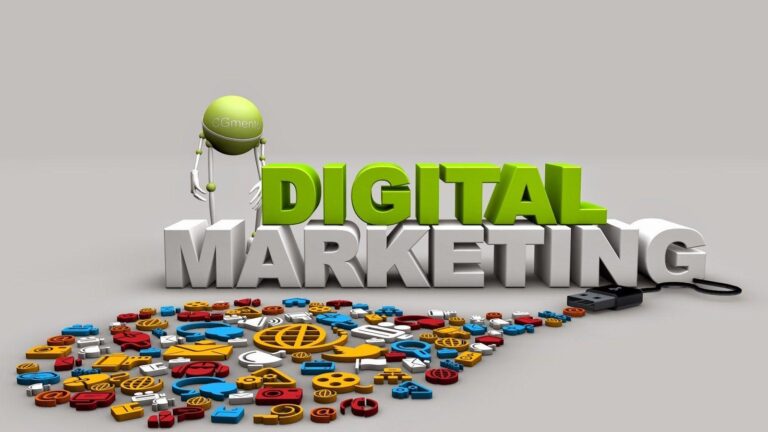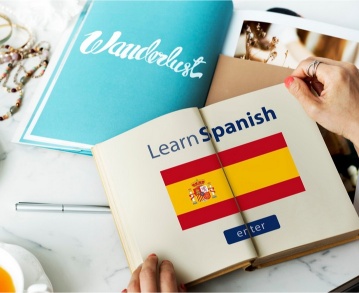Your Story, Translated Perfectly!
Unlock the World, One Language at a Time.
Don’t let language barriers limit your reach. Our professional multimedia translation services ensure your message resonates, captivates, and connects with every global audience.
Your content deserves to be seen, heard, and understood everywhere. Our expert services make it possible to connect with new markets effortlessly.
We go beyond words, adapting your content to local customs and emotions, ensuring your brand is not just heard, but deeply felt and accepted.
Stay ahead of the curve with cutting-edge technology and human-driven insight. Our solutions are designed for the dynamic media landscape of tomorrow.
The Future of Multimedia Translation: AI, Localization & Beyond!
The Future of Multimedia Translation: AI, Localization & Beyond.
In today’s fiercely competitive digital age, content is currency. But in a globalized world, a single language simply isn’t enough. The demand for multimedia translation services has skyrocketed, driven by a powerful truth: to capture a global audience, you must speak their language, understand their culture, and connect with their emotions. From viral videos and blockbuster games to immersive VR experiences and critical marketing campaigns, the need for professional translation services has never been more urgent. This comprehensive article will take you on an expansive, in-depth journey into the fascinating world of multimedia translation, exploring the cutting-edge fusion of AI and human expertise, the critical art of localization that extends far beyond a simple word-for-word conversion, and the thrilling, yet challenging, future that lies ahead. We will dissect the nuances of adapting content for global discovery, examine real-world case studies of monumental success and catastrophic failure, and provide a clear roadmap for how businesses can strategically navigate the complex landscape of multimedia.
1. The AI-Human Partnership: The Ultimate Fusion for Multimedia Translation.
The world of translation is undergoing a radical transformation, fueled by incredible technological advancements. Yet, a fundamental question remains: can machines truly replace human translators? The answer, for now and for the foreseeable future, is a resounding no. The most powerful and effective multimedia translation services today are built on a symbiotic, collaborative relationship between artificial intelligence and human ingenuity. The integration of technology is not a threat to human expertise but a magnificent catalyst that elevates the entire process, making it faster, more efficient, and more scalable than ever before. This revolutionary partnership leverages the strengths of both, creating a workflow that is both technologically advanced and deeply human.
The Rise of AI & Human Collaboration in Multimedia Translation.
The rise of AI-powered tools has dramatically reshaped the translation landscape. Consider a video with a 60-minute running time. Manually transcribing the audio, creating subtitles, and then translating them is a painstaking, time-consuming process that can take a specialist many hours. However, modern AI tools have automated many of these initial, laborious steps, fundamentally changing the workflow. High-fidelity speech recognition software can now quickly and accurately transcribe audio, providing a clean, time-coded base for a human translator. Likewise, sophisticated machine translation (MT) engines, powered by neural networks, can instantly generate a preliminary translation that is remarkably coherent, and auto-subtitling tools can align captions with the audio in a flash.
These tools are not a replacement for human work; they are powerful accelerators. By handling the rote, repetitive, and mechanical tasks, they free up translators to focus on what they do best: the art of language and cultural adaptation. This newfound efficiency is a game-changer, allowing companies to translate vast amounts of content at a pace that was once unthinkable, while significantly reducing costs. A project that might have taken a team of translators a month can now be completed in a matter of days, and this is a profound competitive advantage. The best multimedia translation services understand that the key to speed is not just technology, but the intelligent integration of technology with the human element, creating a seamless, high-velocity process. This synthesis of machine efficiency and human judgment is what truly defines the future of the industry.
The Irreplaceable Role of Human Translators for Cultural Nuances.
While AI is a powerful assistant, it is a creative and cultural vacuum. It lacks the nuanced understanding that is absolutely essential for successful multimedia content. Think about the subtle art of humor, for instance. A machine might translate a punchline literally, stripping it of its wit and context, resulting in a joke that simply falls flat. A human translator, on the other hand, can not only understand the joke but also localize it, adapting it to the target culture so it lands just as perfectly as the original. This process of transcreation is a perfect example of human expertise. It goes beyond a word-for-word exchange, prioritizing the emotional and cultural impact of the message. Furthermore, human translators are masters of idiom and cultural nuance. They can identify subtle references to local history, pop culture, or regional slang, and interpret the true emotion behind a piece of dialogue. They ensure that the tone of a piece of content—be it a serious documentary, a lighthearted animated film, or a high-stakes corporate video—is perfectly preserved. This human touch is the secret ingredient that transforms a robotic, word-for-word translation into a captivating and authentic experience. The best multimedia translation services leverage the speed of AI while prioritizing the creative, cultural, and emotional intelligence of expert human linguists. This fusion is the powerful engine driving global communication. The expertise of professional translation services is not about simply translating words; it’s about translating meaning, emotion, and culture. Without this human layer of expertise, content risks feeling sterile, disconnected, and ultimately, ineffective in a new market.
Expand Your Reach. Elevate Your Message!
Your content deserves to make an impact everywhere. We translate more than words; we deliver powerful experiences that capture the heart of your message and inspire action across cultures.

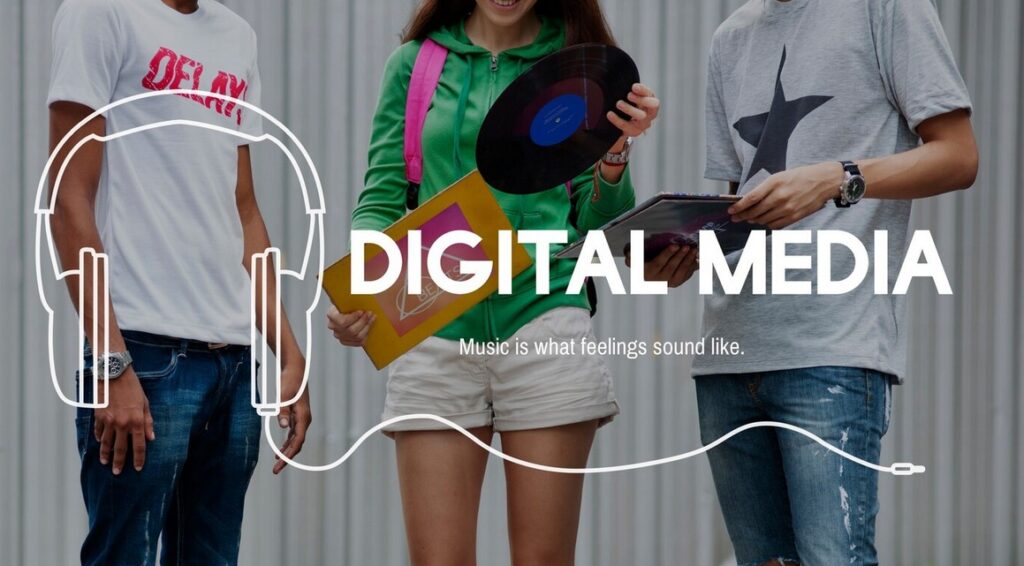
The Art of Global Communication!
Localization Beyond Language: Adapting Visual & Audio Elements!
In multimedia, the message isn’t just in the script. It’s in the visuals, the audio, and the silent signals that audiences subconsciously interpret. Multimedia translation services must therefore extend far beyond mere text to encompass a total localization strategy. This is where the true art of cultural adaptation comes into play, ensuring that a brand’s message is not just understood, but genuinely embraced. This comprehensive approach is what separates a simple translation from true localization, and it is a critical component of any successful international campaign. For instance, a video for a product launch might need completely different visuals in different markets, even if the core message remains the same. The same goes for audio; the choice between dubbing, subtitling, or a voice-over can fundamentally change how a piece of content is received.
Localization Beyond Language: Adapting Visual & Audio Elements.
A visual that is powerful and positive in one country can be confusing or even offensive in another. A simple thumbs-up, for example, is a sign of approval in many Western cultures but is considered a rude gesture in parts of the Middle East and West Africa. Similarly, colors carry different meanings. White is the color of purity and weddings in many cultures, but it is the color of mourning in others. A graphic featuring an owl might symbolize wisdom in the West, but in some Asian cultures, it is seen as a sign of bad luck. Expert professional translation services understand these intricate cultural codes. They work with local specialists to adapt visual elements—from graphics and logos to color palettes and hand gestures—to ensure they resonate positively with the target audience. This meticulous attention to detail prevents embarrassing blunders and builds trust with new consumers. This process of visual localization is an intricate dance of art and anthropology, requiring a deep understanding of what moves and motivates a specific audience. Ignoring these visual cues is a costly mistake that can undermine all other efforts.
The Right Fit: Voice-over vs. Dubbing vs. Subtitling.
The way you deliver the translated audio is as important as the translation itself. There is no one-size-fits-all solution; the choice between dubbing, subtitling, or voice-over depends on the content, the audience, and the cultural context. Subtitling is often the most cost-effective solution and is widely accepted for certain types of content, like documentaries, news segments, and art-house films. For a generation of viewers accustomed to streaming services like Netflix, subtitles are a default choice. They allow the audience to hear the original audio, preserving the actor’s performance and the authentic feel of the production. However, subtitling can sometimes be a distraction, and for content-heavy or fast-paced dialogue, it can be difficult to keep up. Dubbing, where the original audio is replaced with a translated version, is the preferred method in many countries, particularly Germany, Spain, France, and Italy. It offers a more immersive experience, as viewers can watch the screen without reading. However, it is also the most expensive and complex option, requiring skilled voice actors, synchronization with the video, and a deep understanding of the original performance. It can also, if done poorly, feel inauthentic and detached from the visuals. Voice-over is a middle-ground option, often used for corporate videos, news programs, and documentaries. The original audio is kept low in the background, and a new, translated voice is laid over the top. This method maintains the authentic atmosphere of the original while making the content accessible to a new audience. It is faster and more affordable than full dubbing, making it an excellent choice for a variety of media.
Navigating Cultural Norms: Censorship and Adaptation.
The cultural landscape of certain societies can also impose strict limitations on media content. Issues related to sensitive topics like sex, religion, or politics are often heavily regulated, leading to a need for content adaptation or even censorship. A scene showing a couple kissing, a religious symbol, or a political critique might be completely acceptable in one country but require removal or alteration in another to comply with local laws and cultural norms. This presents a difficult challenge for multimedia translation services, as companies must decide whether to alter their original message to fit a market or risk being blocked entirely. When companies choose to alter their content to comply, they must do so with great care to avoid alienating their audience or betraying their brand’s original vision. The consequences of not complying can be severe, ranging from government-mandated bans to public backlash and irreparable brand damage. Therefore, professional translation services must provide not only linguistic expertise but also invaluable counsel on how to navigate these complex cultural and legal minefields. The goal is to find a balance where the content can be shared widely while respecting local sensitivities and regulations.
We don’t just translate words; we localize your message to resonate with cultures worldwide.



Our multimedia translation services are meticulously crafted to preserve the authentic spirit and emotional core of your content, ensuring a genuine connection with audiences worldwide.
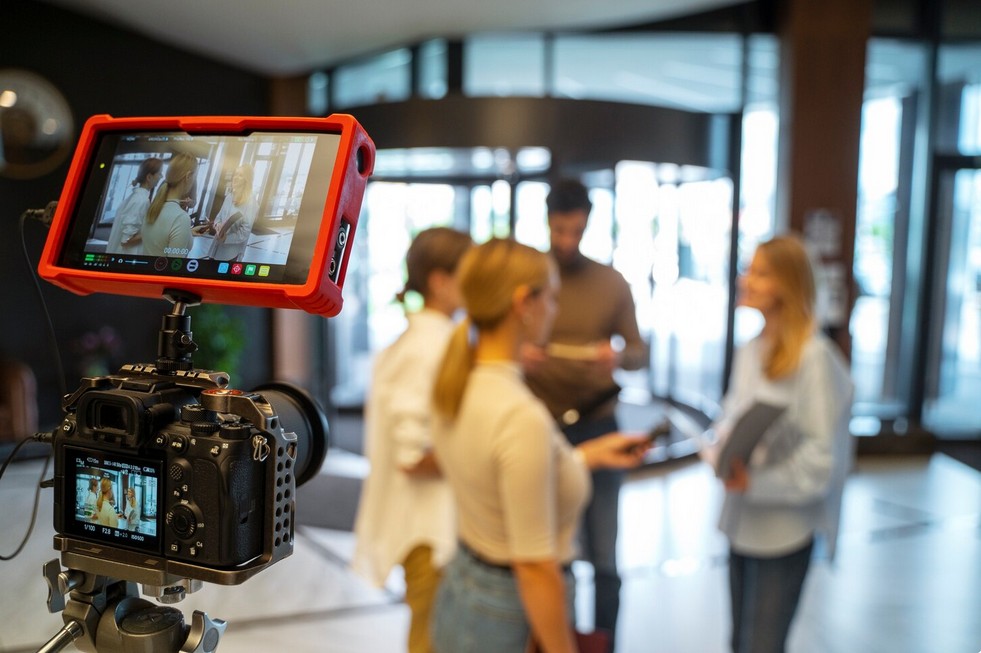
3. Gaming, VR & The Metaverse: The New Frontier of Multimedia Translation.
The digital world is evolving at a breakneck pace, and so are the demands placed on multimedia translation services. Beyond traditional videos and films, new frontiers like gaming, virtual reality (VR), augmented reality (AR), and the burgeoning metaverse present unique and incredibly complex challenges that require innovative translation solutions. These immersive experiences are no longer static pieces of content; they are dynamic, interactive worlds that require a new level of linguistic and cultural adaptation. Translating these experiences is not just about words; it’s about translating the very fabric of an interactive universe, from on-screen text to real-time audio and even the underlying code. The stakes are incredibly high, as a mistranslated instruction or a poorly localized character name can break the entire illusion of the experience, leaving players and users confused and frustrated.
Interactive & Immersive Media Translation (VR/AR, Gaming, Metaverse).
Translating a video game or a VR experience is far more intricate than translating a linear video. It requires dynamic translation that adapts to the player’s choices and actions. In a game, a single line of dialogue might have dozens of variations depending on a player’s path, and all of them must be translated perfectly. Moreover, the user interface (UI) and heads-up display (HUD) must be localized, ensuring that text fits into restricted spaces without breaking the design. This often means providing multiple versions of the same phrase to account for character limits and different screen layouts. Furthermore, game developers are increasingly using procedural generation and dynamic storytelling, which means that the content to be translated might not even exist in a static script. This requires professional translation services to work closely with developers in an agile, iterative process, where translations are delivered and integrated in real time. The metaverse and VR/AR spaces take these challenges a step further. Translation is a total sensory experience. It’s not just about words on a screen; it’s about translating audio cues, on-screen text, and even the cultural context of virtual objects. Imagine a VR game where a certain symbol or icon in a virtual world must be changed for a different cultural market, or a piece of text on a virtual billboard must be localized for different regions. This level of comprehensive, total-package multimedia translation services is the new gold standard. It’s about translating the entire experience, not just the text.
Real-Time Translation in Live Streams and Virtual Events.
The rise of live content, from eSports streams on Twitch to global virtual conferences and metaverse events, has exploded in popularity. This new reality demands real-time translation capabilities. Traditional translation methods, which can take days or weeks, are simply unfeasible for live events. The future of live event translation lies in a hybrid model, using AI-powered transcription and machine translation for speed, with human interpreters acting as a crucial layer of quality control and cultural adaptation. This combination ensures that participants and viewers from around the world can engage in a single, seamless event without language barriers. For example, a live eSports broadcast can use AI to instantly transcribe and translate the commentary, with human post-editors correcting any errors on the fly. For a virtual conference, attendees in different virtual rooms can hear a simultaneous interpretation of the speaker’s presentation, allowing for global participation and engagement. The complexity of these projects requires multimedia translation services that are not only technologically advanced but also have the logistical expertise to manage and coordinate live events across multiple time zones and languages. The demand for these services will only continue to grow as the line between the physical and digital worlds continues to blur.
Immersive Worlds, Global Words. Your Game, Their Language.
From the metaverse to AAA titles, our specialized multimedia translation services bring your interactive worlds to life for players everywhere, ensuring an authentic experience.
Beyond Translation: Crafting Authentic Experiences.
A great game speaks to the heart, not just the mind. We go beyond simple translation to localize every detail—from the tone of a character’s dialogue to the cultural nuances in the humor. Our goal is to make your game feel native to every player, ensuring your original vision remains vibrant and authentic, no matter the language.
4. SEO & Multimedia: Optimizing Translated Content for Global Reach.
What good is perfectly translated content if no one can find it? The power of multimedia translation services is fully realized only when it is paired with a robust multilingual SEO strategy. This approach ensures that your videos, podcasts, and other media assets rank high in search results, reaching the global audience you worked so hard to target. Merely translating a video title or description is an excellent first step, but it’s far from a complete strategy. True multilingual SEO for multimedia involves an intricate process of keyword research, cultural adaptation, and technical optimization that is essential for discoverability and success in international markets. This is particularly crucial for businesses looking to expand their presence in specific regions, such as those that might turn to a specialist like Earabictranslations.com multimedia translation service page when targeting Arabic-speaking markets. Without a dedicated SEO strategy, your meticulously crafted multimedia content could languish in obscurity, unable to reach its intended audience.
How Multilingual SEO Applies to Video Descriptions, Subtitles, and Podcast Transcripts.
When it comes to video SEO, the title, description, and tags are your most valuable real estate. Translating these elements is a great first step, but it’s not enough. A literal translation of an English title might not contain the keywords that your target audience is using. A successful multilingual SEO strategy involves researching local search terms and keywords and then creating titles and descriptions that are optimized for those specific terms. For a video about a new product, the title should reflect how people in that country actually search for that product, not just a direct translation of the English title. For example, the title «Latest Smartphone Gadget Review» in English might be better optimized as «Análise do Novo Celular» (Analysis of the New Cellphone) in Portuguese, using the localized keyword. Furthermore, subtitles and captions are SEO goldmines. Search engines can’t watch videos, but they can read the text in your subtitles and transcripts. By providing properly translated subtitles, you are effectively giving search engines a full transcript of your video’s content, which dramatically boosts its searchability and discoverability in a new language market. This is a powerful, yet often overlooked, component of a successful multimedia translation services strategy. For podcasts, providing a full, translated transcript can similarly boost its SEO value, making the audio content searchable and indexable by search engines in multiple languages.
Tips for Keyword Localization.
Keyword localization goes beyond simple translation. It involves understanding how people in different regions search for the same product or service. A company selling mobile phones, for instance, must know that in the US, the term «cell phone» is common, while in the UK, «mobile phone» or «mobile» is preferred. An even deeper dive might reveal that in some Spanish-speaking regions, the term «móvil» is used, while in others, «celular» is the norm. The best multimedia translation services provide this critical SEO insight. By collaborating with local experts, they can identify the most relevant and high-traffic keywords for each market, ensuring that your translated content isn’t just accurate—it’s also profitable. The process of keyword localization can also reveal opportunities to target long-tail keywords or a more specific user intent that a direct translation would miss. This strategic approach to SEO is what differentiates a simple translation from a truly effective localization effort. For instance, a phrase like «best budget headphones» would need to be researched and adapted for each market, as the specific terms for «budget» and «headphones» can vary significantly.
The World Is Your Stage!
We empower your brand to captivate a global audience with authenticity, precision, and passion.
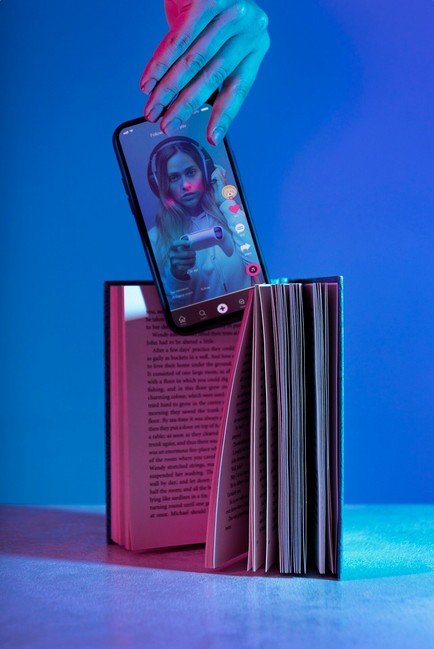
Your message deserves to be found by everyone, everywhere.
Your incredible multimedia content deserves a global audience. Our SEO-driven translation services ensure your brand is not just seen, but easily found by millions.

We turn your content into a powerful global asset.
Don’t just translate your content; optimize it for global search engines. Our services transform your multimedia into a powerful asset, ensuring your brand’s unique voice and vision are not just heard, but discovered by the right audience around the world.
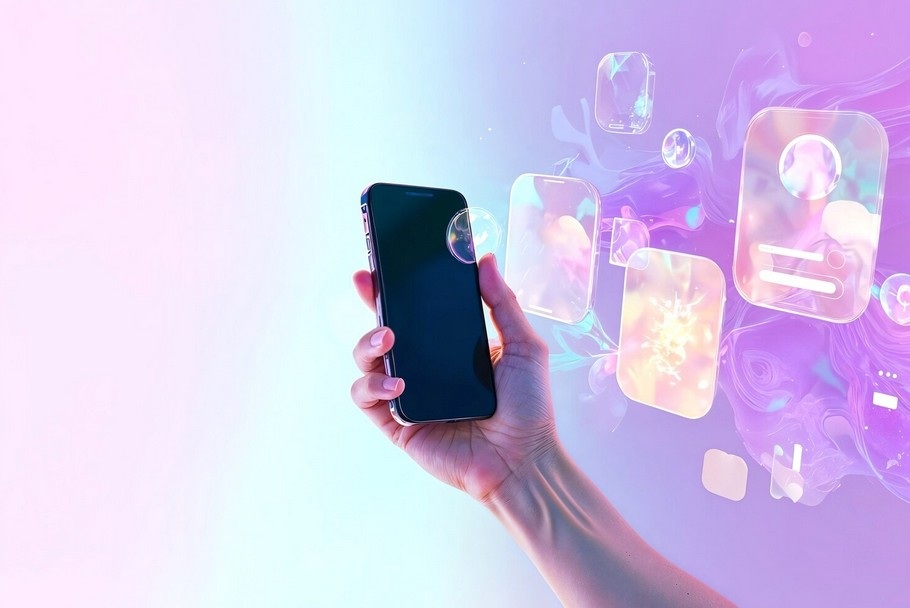
Let us make your content the top answer.
Millions of people are searching for content just like yours. Our localization experts don’t just translate, they perform in-depth keyword research and cultural optimization, making your content the top answer to their queries, everywhere.
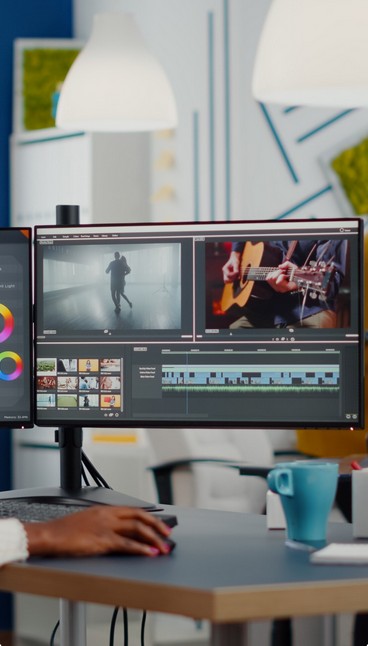
Go beyond simple translation for a competitive edge.
Go beyond simple translation to gain a true competitive edge. We meticulously adapt your multimedia content with a localized SEO strategy, turning every video, podcast, and article into a powerful tool for organic traffic and brand discovery.
5. Accessibility Matters: Inclusive Multimedia Translation.
In today’s world, inclusivity isn’t just a buzzword; it’s an ethical and legal imperative. Providing accessible content is a mark of a truly professional organization, and it’s a key component of high-quality multimedia translation services. By making your content accessible to everyone, you not only expand your audience but also demonstrate a powerful commitment to your community. As digital content becomes the primary way we consume information and entertainment, it is crucial to ensure that no one is left behind. This commitment to accessibility is what distinguishes a good translation service from a great one. It shows a deep understanding of the diverse needs of a global audience and a dedication to ensuring that every individual has the opportunity to engage with and enjoy your content, regardless of their physical abilities. The legal landscape is also changing, with many countries enacting laws that mandate accessibility for digital media, making these services an essential part of a comprehensive strategy.
The Importance of Closed Captions, SDH, and Audio Descriptions.
Accessibility begins with the basics. Closed captions (CC) are a must for any video content. They provide a text version of the audio, allowing individuals who are deaf or hard of hearing to follow along. But the needs of this community go beyond simple captions. Subtitles for the Deaf and Hard of Hearing (SDH) are even more comprehensive. They include not only the dialogue but also non-speech sounds, such as «(dramatic music plays)» or «(door slams).» This additional information provides a richer, more complete experience, enabling a deaf audience to fully grasp the emotional and atmospheric context of the content, which is often as important as the dialogue itself. For individuals who are blind or have low vision, audio descriptions are vital. These are narrated tracks that describe the key visual elements of a video—like a character’s actions, expressions, or a change in scenery—that would otherwise be missed. The creation of these descriptions requires a high level of linguistic skill and an understanding of the visual narrative, which is why it is an integral part of professional translation services. Without these crucial components, a significant portion of the population is excluded from engaging with your content, a loss for both the consumer and the content creator.
How AI is Improving Real-time Sign Language Avatars in Videos.
The future of accessibility is equally exciting. AI is now being used to create real-time sign language avatars that can translate spoken words into visual sign language. Imagine a live news broadcast where an AI avatar on the screen is signing the news in real-time, making it instantly accessible to the deaf community. While this technology is still in its nascent stages, it holds the incredible potential to revolutionize how we communicate and ensure that no one is left behind. These avatars are being trained on vast datasets of sign language, and as the technology improves, they will be able to convey not only the words but also the tone and emotion behind the message. This innovation will drastically reduce the cost and logistical challenges of providing live sign language interpretation, making it a viable option for a much wider range of content. This kind of forward-thinking integration of technology and human-centered design is exactly what defines cutting-edge multimedia translation services. It’s about using the power of AI to create a more inclusive and equitable world.
Accessibility is Our Promise.
For Everyone, Everywhere.
Our professional translation services are dedicated to creating inclusive content with closed captions, SDH, and audio descriptions, ensuring your message is accessible to all.
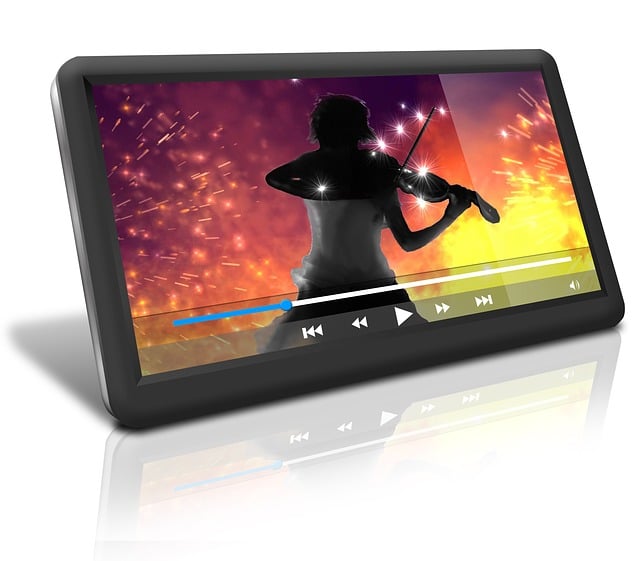
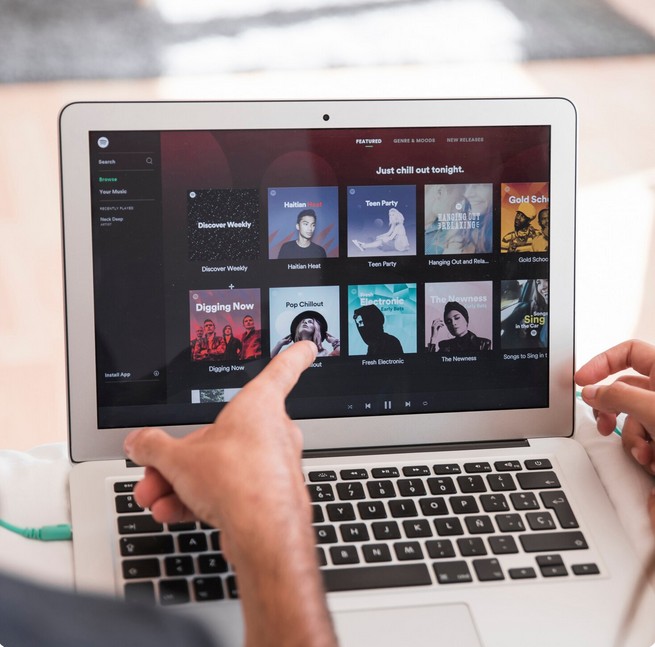


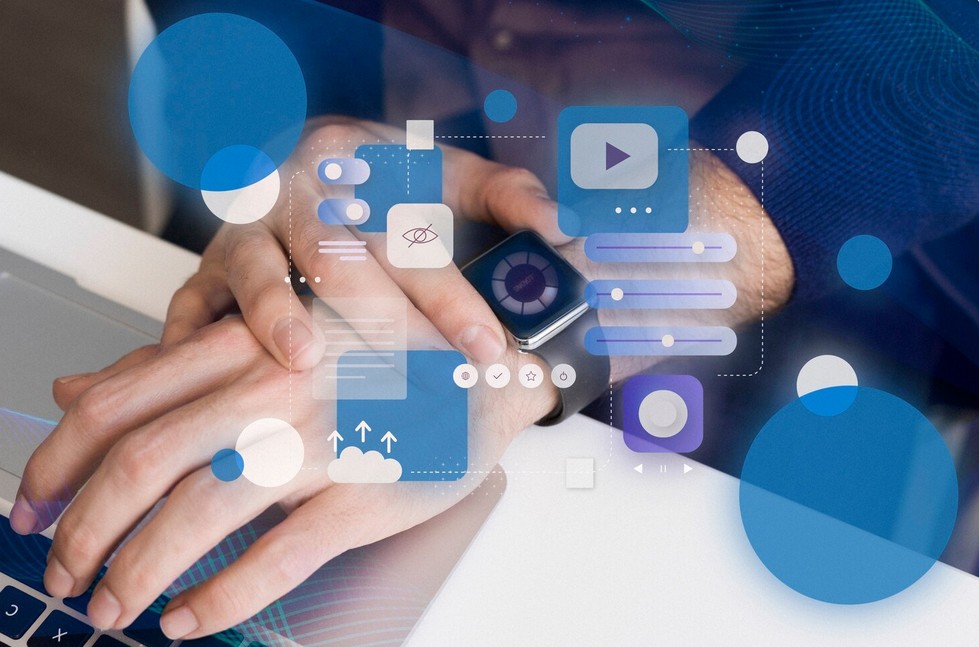

6. Lessons from Successes & Fails: When Translation Made (or Broke) a Global Campaign.
The history of global business is littered with powerful lessons, both triumphant and disastrous, that highlight the critical importance of professional translation services. These real-world examples underscore the immense power of accurate, culturally-aware translation and the catastrophic risks of getting it wrong. Every major brand that has attempted to expand internationally has a story to tell about translation, and these stories are a testament to the fact that language is not just a tool for communication; it is a gateway to culture, emotion, and trust. The key to global success is to learn from these stories and to understand that a good translation is an investment, not an expense. The wrong translation can be far more costly than the most expensive multimedia translation services.
Success: Netflix’s «Squid Game» Subtitle vs. Dub Debates.
When Netflix’s «Squid Game» became a global phenomenon, it also sparked a fascinating debate about subtitles and dubbing. Many viewers who watched the dubbed version complained that the translation felt flat, with some of the cultural nuances and powerful emotional subtext lost in translation. However, viewers who opted for the subtitles often had a much more authentic experience. The show’s success became a case study in how to handle a localization challenge. Netflix’s professional translators worked meticulously to create subtitles that, while not a literal translation, captured the essence of the show. The debate itself brought to light the sophisticated expectations of a global audience and the critical role that both subtitling and dubbing play in a successful international launch. This demonstrates that for creative content, a one-size-fits-all approach to multimedia translation services is inadequate. The best strategy is to offer audiences a choice, allowing them to engage with the content in the way they find most authentic. This led to a larger conversation within the industry about the difference between standard subtitles and closed captions, as a viral TikTok video highlighted the fact that Netflix’s English closed captions were a transcript of the English dub, which had been altered to match lip movements and timing, and not a direct translation of the Korean dialogue. This crucial distinction underscored the complex decisions that go into producing content for a global audience.
Fail: Pepsi’s «Come Alive» Misinterpreted in China.
Pepsi’s legendary «Come Alive with the Pepsi Generation» campaign was a huge hit in the US. However, when they launched the campaign in China, the translation was a complete disaster. The slogan was mistranslated to mean «Pepsi brings your ancestors back from the dead,» a terrifying and deeply offensive message in a culture that venerates its ancestors. This blunder serves as a powerful cautionary tale about the absolute necessity of working with professional translation services that have a deep, on-the-ground understanding of the target market. A simple, literal translation can be dangerous, and a cultural misstep can not only lead to financial loss but also permanently damage a brand’s reputation. This is why a service like Earabictranslations.com multimedia translation service page is so crucial for companies targeting specific markets; it highlights the need for specialized knowledge and cultural insight. Another famous example, the HSBC bank’s «Assume Nothing» campaign, was mistranslated in several countries to «Do Nothing,» a message that resulted in a costly re-branding effort. These are not just funny anecdotes; they are expensive lessons in the power of language.
7. The Future: Neural Voice Cloning & Hyper-Personalized Media.
The future of multimedia translation services is being written right now, in the labs of AI researchers and in the offices of forward-thinking translation agencies. The technology on the horizon is both incredibly exciting and fraught with complex ethical questions. This new wave of innovation promises to make translation faster and more personalized than ever before, but it also demands a careful, thoughtful approach to its implementation. The conversation has shifted from «can we translate it?» to «how should we translate it in a way that is both technologically advanced and ethically sound?» This is the challenge that the next generation of translation professionals must tackle. The tools of tomorrow are not just about speed, but about authenticity and responsibility.
How AI-Generated Voices Can Mimic Tone and Emotion in Different Languages
Imagine a world where a voice in a film, a game, or a podcast can be instantly translated into any language, with the same tone, emotion, and cadence as the original. This is the promise of neural voice cloning. This technology uses AI to analyze a person’s voice and then replicate it, allowing the synthesized voice to «speak» new words and even new languages. For a small budget, a company could create a translated version of a video that sounds exactly like the original speaker, rather than a generic text-to-speech voice. This technology has the potential to make professional translation services faster and more affordable than ever, opening up new possibilities for content creators. Imagine a single voice actor’s performance being instantly available in a dozen languages, preserving the artistic integrity of the original work. This is a powerful tool for global brands, allowing them to maintain a consistent vocal identity across all their markets. Companies like memoQ are already exploring these advanced AI-powered translation solutions, pushing the boundaries of what is possible.
The Ethical Concerns of Deepfake Dubbing
The same technology that can be used for harmless voice cloning can also be used for malicious purposes, known as deepfake dubbing. What happens when a person’s voice is cloned and used to say something they never said? The potential for misinformation, fraud, and political manipulation is immense. The ethical debates surrounding this technology are just beginning, and they will likely shape the legal and moral landscape of the digital world for years to come. Professional translation services must navigate this new reality with a strong commitment to ethical guidelines, ensuring that this powerful technology is used for good, not for harm. The industry must develop clear standards and best practices to protect against misuse, ensuring that trust in translated content is maintained. This requires a strong partnership between technology developers, legal experts, and human translators. The conversation is not just about what is technically possible, but what is morally permissible.
8. Cost vs. Quality: Finding the Right Balance.
When considering multimedia translation services, the question of budget is always a key factor. How much should you spend, and where can you make trade-offs without compromising quality? The answer depends on your project, your audience, and your goals. It is a critical decision that requires a careful weighing of a project’s needs against its financial constraints. For some content, speed and affordability are the most important factors, while for others, a flawless, culturally resonant translation is non-negotiable. Finding the right balance is key to a successful global launch, and it’s where the expertise of a service like Oris Translations professional translation services pillar page becomes invaluable.
Compare Machine Translation Post-Editing (MTPE) vs. Full Human Translation.
Machine Translation Post-Editing (MTPE) is a hybrid approach that is becoming increasingly popular. It involves using an AI translation tool to generate a first draft and then having a human translator review and refine it. This process is generally faster and more affordable than a full human translation. It is an excellent option for low-stakes content where the message is straightforward, such as internal corporate communications, user guides, or technical documents. For companies with a massive backlog of content, MTPE can be a lifesaver, allowing them to quickly make a wide range of materials available in multiple languages. However, for high-stakes content—like marketing materials, creative campaigns, and video games—a full human translation is often the only acceptable choice. The nuance, creativity, and cultural sensitivity required for these projects simply cannot be replicated by a machine, even with post-editing. A professional human translator can capture the emotional heart of your message, a skill that is priceless for content that needs to connect with an audience.
When to Invest in Professional Voice Actors vs. Synthetic VoicesThe choice between a synthetic voice and a professional dubbing artist is another key budget decision. Synthetic voices are becoming more sophisticated, but they still lack the authentic emotion and character that a human can provide. They are an affordable and effective option for content where the voice is not a key component of the brand, such as training videos or simple informational content. For high-profile projects, however, professional voice actors are an indispensable investment. Their ability to deliver a performance that is rich with emotion, timing, and personality is what truly brings a character to life. The emotional connection created by a skilled actor can be the difference between a good video and a great one. The choice, ultimately, is about your brand’s commitment to quality and the emotional impact of your content, and it is a key consideration when planning your multimedia translation services strategy.
Conclusion: The Human Touch in a Machine World.
The journey through the world of multimedia translation services reveals a dynamic and ever-evolving landscape. From the indispensable partnership between AI and human translators to the critical art of cultural localization and the thrilling frontiers of VR and voice cloning, one truth remains constant: the human element is, and will always be, the heart of great communication. The future isn’t about replacing people with machines; it’s about empowering people with more powerful tools. As technology continues to push the boundaries of what is possible, the balance of AI efficiency and the irreplaceable human touch will define tomorrow’s multimedia translation, ensuring that our stories, ideas, and messages can be shared with everyone, everywhere. The demand for expert Oris Translations multimedia translation service page is not just about translating words, but about building bridges between cultures, fostering understanding, and creating a truly global dialogue. The rise of AI has not diminished the importance of the translator, but rather elevated it, allowing them to focus on the creative, cultural, and emotional work that only a human can truly master. This synthesis of technology and human expertise is the key to unlocking the full potential of your content on a global scale.
Your Key Questions Answered!
Got Questions? We’ve Got Answers.
Navigating the world of multimedia translation services can feel complex. Below are some of the most common questions we hear, with clear and concise answers to help you make informed decisions about your project.
Translation is Our Art!

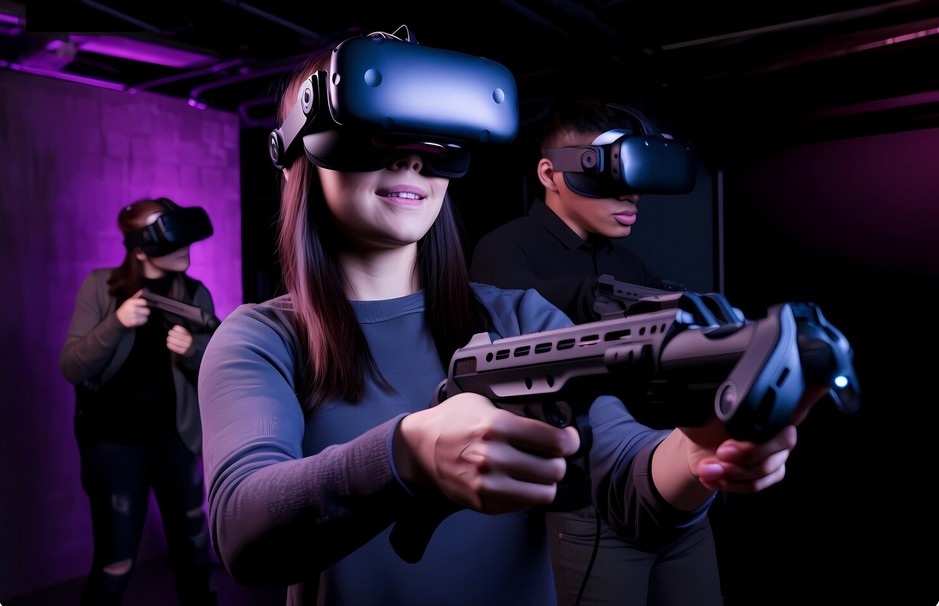
Ready to Go Global? Let’s Talk.
Your Story Starts Here!
Why Wait? Start Your Global Journey!
The world is waiting to hear your message. Partner with us to ensure your content is powerful, accessible, and perfectly localized for every audience.


